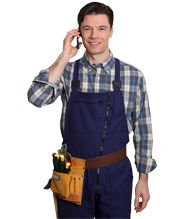When optimizing the aesthetics and utility of a residence or commercial space, understanding the right type of sliding doors becomes indispensable. These doors aren't just a gateway to outdoor relaxation spaces but also instrumental in facilitating light and bridging the boundary between interiors and the great outdoors. This comprehensive guide takes a deeper look into the assortment of sliding door types out there, ensuring you make a well-informed decision tailored to your specific requirements.
What Are the Basic Sliding Door Types?
As one dives into the world of sliding doors, it quickly becomes apparent that each type of sliding door has its unique charm and utility. Let's break down the primary categories:
1. Traditional Sliding Doors: Perhaps the most recognized type of sliding doors, traditional sliding doors predominantly consist of two panels. Here, one of the panels slides horizontally across the other static one. Predominantly chosen for patios, balconies, and decks, these doors are synonymous with functionality and unobtrusive style. They connect your indoor and outdoor spaces seamlessly, offering panoramic views and easy access.
2. Pocket Sliding Doors: The magic of pocket sliding doors lies in their space-saving design. These doors recede into a compartment or 'pocket' inside the adjoining wall when opened. Pocket sliding doors are the go-to option for areas where space is at a premium or where a minimalist aesthetic is desired. They offer a seamless transition without any protruding panels.
3. Telescoping Sliding Doors: These are the epitome of grandeur when discussing types of sliding doors. With multiple panels involved, each slides over the adjacent one, creating an expansively broad opening. If uninterrupted vistas or large entryways are the goal, telescoping sliding doors should be on your radar.
4. Bypass Sliding Doors: A favorite for closet spaces and wardrobes, bypass sliding doors feature two or more panels that gracefully glide past each other. These doors are practical for narrow spaces since they don't swing outwards, ensuring efficient use of available rooms.
How Do Materials Impact Types of Sliding Doors?
The choice of material isn't just about aesthetics. The material profoundly influences the durability, maintenance, and energy efficiency of sliding door types:
- Aluminum: Praised for its lightweight properties, aluminum remains resilient against elements. Its inherent strength supports large glass panes, and its corrosion resistance ensures longevity.
- Wood: Nothing rivals the timeless allure of wooden sliding doors. They introduce warmth and classical elegance. However, they demand consistent maintenance to guard against warping or rotting.
- Vinyl: A modern favorite, vinyl doors balance cost-effectiveness and energy efficiency. Besides being durable, they offer excellent insulation, making them a popular choice for energy-conscious homeowners.
- Fiberglass: Successfully emulating the charm of wood without its maintenance concerns, fiberglass is robust against the elements, resisting dents, decay, and warping.
Are There Different Glass Options for Sliding Doors?
Indeed, the types of sliding door glass variations are vast, with each catering to specific needs:
1. Tempered Glass: Safety is paramount, and tempered glass reigns supreme in this department. When broken, it crumbles into granular chunks instead of jagged shards, minimizing injury risks.
2. Low-E Glass: Modern-day concerns of UV rays and energy efficiency are addressed by Low-E glass. By reducing the entry of UV rays, it not only helps regulate indoor temperatures but also protects your interiors and furnishings from premature fading.
3. Tinted Glass: If privacy is a concern or if you want to lessen the sun's glare and heat, tinted glass becomes an obvious choice. It offers a subtle shade, ensuring discretion while still allowing ample light.
What Are the Key Features to Look for in a Sliding Door?
Navigating the array of types of sliding doors necessitates an understanding of pivotal features:
- Security: Robust locking mechanisms are non-negotiable. Ensure that the doors you choose have reliable, multi-point locking systems for peace of mind.
- Energy Efficiency: Energy conservation is more than a trend; it's necessary. Opt for doors that champion insulation, tight seals, and energy-efficient glass.
- Ease of Operation: A sliding door should glide effortlessly. Premium roller systems and high-quality tracks ensure a hassle-free experience.
How to Maintain Your Sliding Doors?
Ensuring that your chosen sliding door types remain in prime condition is a blend of routine care and vigilance:
1. Cleaning: Dust, grime, and environmental residues can accumulate. Regular cleaning with a soft cloth and mild detergent keeps your doors sparkling and operational.
2. Lubrication: The tracks demand periodic lubrication to facilitate smooth sliding. A silicone-based lubricant usually does the trick.
3. Inspection: Proactive checks for signs of wear, misalignment, or damage can save costly repairs in the long run. Address minor issues promptly to ensure longevity.
Conclusion
In the realm of doors, the type of sliding doors you choose can be transformative, both aesthetically and functionally. Whether you crave panoramic views, expansive entries, or space-saving solutions, there's a sliding door tailored to your needs. Remember that, beyond the initial choice, regular maintenance ensures that your door remains a beautiful and functional asset for years.


